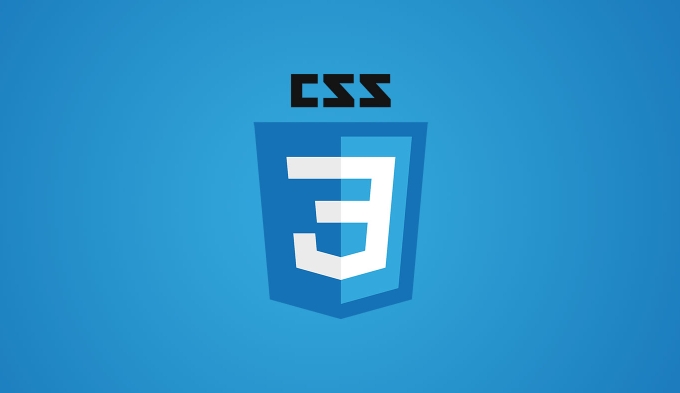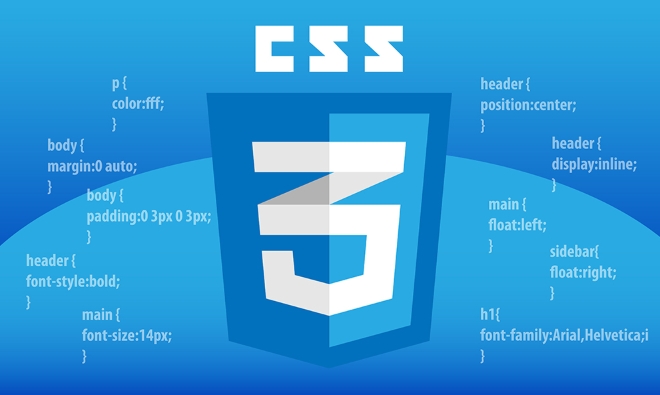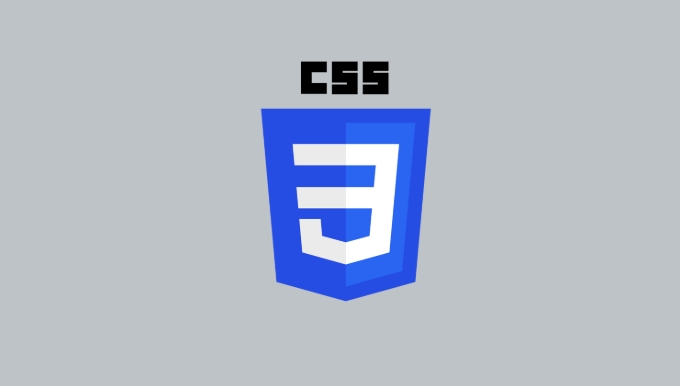Understanding and using CSS Container Queries (emerging topic)
Jul 05, 2025 am 01:06 AMCSS Container Queries is a new responsive design mechanism that allows restyling based on the size of component containers rather than viewport size. The steps to use are: 1. Define the container type through container-type, such as inline-size or size; 2. Optionally use container-name to name the container; 3. Use @container query to write corresponding style rules. Applicable scenarios include cards, toolbars, advertising modules, and other components that need to be adaptively displayed in different contexts. Notes include explicit declaration of container type, performance impact and compatibility issues. Currently, mainstream browsers have supported it but need to combine downgrade processing or progressive enhancement strategies.

In web development, responsive design has always been one of the core issues. With the advent of CSS Container Queries, we can finally adjust the style based on the container size of the component, instead of relying solely on the size of the entire viewport. This is a huge step forward for modern modular development.

What are CSS Container Queries?
CSS Container Queries is a new responsive mechanism that allows you to style an internal element based on the size of a container (rather than the entire browser window). You can mark a component as a "query container" and define different layout rules based on the size of the container.

The usage method is very simple: first use container-type to define a container type, such as inline-size or size , and then write the corresponding style rules through @container query. For example:
.widget {
container-type: inline-size;
}
@container (max-width: 300px) {
.widget {
font-size: 12px;
}
} In this way, when the width of the .widget container is less than or equal to 300px, the text inside will become smaller, achieving more flexible adaptive performance.

How to set up a container and use a query?
To use Container Queries, you must first clarify which elements are what you want to be a "container". It is usually some component-level blocks, such as cards, sidebars, or ad slots.
The setup method is as follows:
- Add
container-typeattribute to the target element, it is recommended to start withinline-sizebecause it only focuses on width. - If you need to control the width and height at the same time, you can use
sizetype, but pay attention to performance issues. - Use
container-nameto name the container, making it easier to distinguish different containers in multiple queries.
Example:
.card {
container-type: inline-size;
container-name: card-container;
}
@container card-container (max-width: 400px) {
.card-content {
flex-direction: column;
}
}In this way, even if multiple components use similar structures, their respective response behaviors can be controlled separately.
Which scenarios are suitable for using Container Queries?
Container Queries is especially suitable for components that require a consistent appearance in different contexts. For example:
- Card Component: Shows the compact version in the sidebar and the full version in the main content area.
- Toolbar or button group: Automatically switch horizontal/vertical arrangement according to available space.
- Advertising module: Hide some elements in small containers to avoid crowding.
This ability allows components to truly achieve "self-perception" and make reasonable displays without the intervention of external logic.
Notes and compatibility
Currently, mainstream browsers already support Container Queries, but the following points should still be noted in actual projects:
- Not all containers can be query objects,
container-typemust be explicitly declared. - Complex nesting can affect performance, especially when
sizetype is used. - Currently, it cannot be mixed in other places other than media queries, such as not nesting inside
@media.
If you are worried about compatibility, you can add downgrade processing logic to the code, or combine traditional media queries to make progressive enhancements.
Basically that's it. Container Queries allows components to truly have "environmental awareness" capabilities. Although it is still in the stage of popularity, it has begun to change the way we build UIs.
The above is the detailed content of Understanding and using CSS Container Queries (emerging topic). For more information, please follow other related articles on the PHP Chinese website!

Hot AI Tools

Undress AI Tool
Undress images for free

Undresser.AI Undress
AI-powered app for creating realistic nude photos

AI Clothes Remover
Online AI tool for removing clothes from photos.

Clothoff.io
AI clothes remover

Video Face Swap
Swap faces in any video effortlessly with our completely free AI face swap tool!

Hot Article

Hot Tools

Notepad++7.3.1
Easy-to-use and free code editor

SublimeText3 Chinese version
Chinese version, very easy to use

Zend Studio 13.0.1
Powerful PHP integrated development environment

Dreamweaver CS6
Visual web development tools

SublimeText3 Mac version
God-level code editing software (SublimeText3)
 CSS tutorial for creating loading spinners and animations
Jul 07, 2025 am 12:07 AM
CSS tutorial for creating loading spinners and animations
Jul 07, 2025 am 12:07 AM
There are three ways to create a CSS loading rotator: 1. Use the basic rotator of borders to achieve simple animation through HTML and CSS; 2. Use a custom rotator of multiple points to achieve the jump effect through different delay times; 3. Add a rotator in the button and switch classes through JavaScript to display the loading status. Each approach emphasizes the importance of design details such as color, size, accessibility and performance optimization to enhance the user experience.
 Addressing CSS Browser Compatibility issues and prefixes
Jul 07, 2025 am 01:44 AM
Addressing CSS Browser Compatibility issues and prefixes
Jul 07, 2025 am 01:44 AM
To deal with CSS browser compatibility and prefix issues, you need to understand the differences in browser support and use vendor prefixes reasonably. 1. Understand common problems such as Flexbox and Grid support, position:sticky invalid, and animation performance is different; 2. Check CanIuse confirmation feature support status; 3. Correctly use -webkit-, -moz-, -ms-, -o- and other manufacturer prefixes; 4. It is recommended to use Autoprefixer to automatically add prefixes; 5. Install PostCSS and configure browserslist to specify the target browser; 6. Automatically handle compatibility during construction; 7. Modernizr detection features can be used for old projects; 8. No need to pursue consistency of all browsers,
 What is the difference between display: inline, display: block, and display: inline-block?
Jul 11, 2025 am 03:25 AM
What is the difference between display: inline, display: block, and display: inline-block?
Jul 11, 2025 am 03:25 AM
Themaindifferencesbetweendisplay:inline,block,andinline-blockinHTML/CSSarelayoutbehavior,spaceusage,andstylingcontrol.1.Inlineelementsflowwithtext,don’tstartonnewlines,ignorewidth/height,andonlyapplyhorizontalpadding/margins—idealforinlinetextstyling
 Styling visited links differently with CSS
Jul 11, 2025 am 03:26 AM
Styling visited links differently with CSS
Jul 11, 2025 am 03:26 AM
Setting the style of links you have visited can improve the user experience, especially in content-intensive websites to help users navigate better. 1. Use CSS's: visited pseudo-class to define the style of the visited link, such as color changes; 2. Note that the browser only allows modification of some attributes due to privacy restrictions; 3. The color selection should be coordinated with the overall style to avoid abruptness; 4. The mobile terminal may not display this effect, and it is recommended to combine it with other visual prompts such as icon auxiliary logos.
 Creating custom shapes with css clip-path
Jul 09, 2025 am 01:29 AM
Creating custom shapes with css clip-path
Jul 09, 2025 am 01:29 AM
Use the clip-path attribute of CSS to crop elements into custom shapes, such as triangles, circular notches, polygons, etc., without relying on pictures or SVGs. Its advantages include: 1. Supports a variety of basic shapes such as circle, ellipse, polygon, etc.; 2. Responsive adjustment and adaptable to mobile terminals; 3. Easy to animation, and can be combined with hover or JavaScript to achieve dynamic effects; 4. It does not affect the layout flow, and only crops the display area. Common usages are such as circular clip-path:circle (50pxatcenter) and triangle clip-path:polygon (50%0%, 100 0%, 0 0%). Notice
 How to create responsive images using CSS?
Jul 15, 2025 am 01:10 AM
How to create responsive images using CSS?
Jul 15, 2025 am 01:10 AM
To create responsive images using CSS, it can be mainly achieved through the following methods: 1. Use max-width:100% and height:auto to allow the image to adapt to the container width while maintaining the proportion; 2. Use HTML's srcset and sizes attributes to intelligently load the image sources adapted to different screens; 3. Use object-fit and object-position to control image cropping and focus display. Together, these methods ensure that the images are presented clearly and beautifully on different devices.
 Demystifying CSS Units: px, em, rem, vw, vh comparisons
Jul 08, 2025 am 02:16 AM
Demystifying CSS Units: px, em, rem, vw, vh comparisons
Jul 08, 2025 am 02:16 AM
The choice of CSS units depends on design requirements and responsive requirements. 1.px is used for fixed size, suitable for precise control but lack of elasticity; 2.em is a relative unit, which is easily caused by the influence of the parent element, while rem is more stable based on the root element and is suitable for global scaling; 3.vw/vh is based on the viewport size, suitable for responsive design, but attention should be paid to the performance under extreme screens; 4. When choosing, it should be determined based on whether responsive adjustments, element hierarchy relationships and viewport dependence. Reasonable use can improve layout flexibility and maintenance.
 What are common CSS browser inconsistencies?
Jul 26, 2025 am 07:04 AM
What are common CSS browser inconsistencies?
Jul 26, 2025 am 07:04 AM
Different browsers have differences in CSS parsing, resulting in inconsistent display effects, mainly including the default style difference, box model calculation method, Flexbox and Grid layout support level, and inconsistent behavior of certain CSS attributes. 1. The default style processing is inconsistent. The solution is to use CSSReset or Normalize.css to unify the initial style; 2. The box model calculation method of the old version of IE is different. It is recommended to use box-sizing:border-box in a unified manner; 3. Flexbox and Grid perform differently in edge cases or in old versions. More tests and use Autoprefixer; 4. Some CSS attribute behaviors are inconsistent. CanIuse must be consulted and downgraded.






